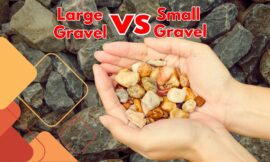When you think of a turtle, the first image that likely comes to mind is of its distinctive shell—a protective armor that gives turtles their iconic look. But have you ever wondered what would happen if a turtle didn’t have its shell? Some may even ask if a turtle can survive without its shell. The simple answer is: No. The shell is more than just a shield for turtles; it is a critical part of their anatomy and is essential for their survival.
In this blog post, we’ll explore why a turtle without shell is a tragic impossibility, and why this fascinating structure is vital to the health and life of a turtle.
1. What Happens to a Turtle Without Its Shell?
One of the most common misconceptions is that a turtle can shed or leave its shell and continue to survive. In reality, a turtle cannot live without its shell—the shell is a living part of its body. It is fused to the turtle’s ribs and spine, which means the turtle’s skeleton is integral to its shell. The shell itself is made of bone and keratin, and it houses important nerves and blood vessels.
Why a Turtle’s Shell Is Critical for Survival
- Protection: The most obvious function of a turtle’s shell is to protect it from predators and environmental dangers. Without the shell, the turtle would be completely vulnerable to attack.
- Skeleton Support: The shell is not something a turtle can crawl out of. It’s attached to its skeleton, and losing the shell would be like losing a major part of its body.
- Internal Organs: The shell acts as a protective covering for vital organs, such as the heart and lungs. Without it, the turtle’s organs would be exposed and unable to function properly.
2. 5 Surprising Facts About Turtle Shells You Didn’t Know
The turtle’s shell is much more than just a hard covering. Here are five surprising facts about turtle shells that will give you a deeper appreciation for this incredible structure:
1. Turtles Can Feel Through Their Shell
- Contrary to popular belief, turtles can feel sensations through their shells. The shell contains nerves that connect to the turtle’s nervous system, so while it’s tough, it’s not entirely numb. This means a turtle can feel when its shell is touched, scratched, or damaged.
2. The Shell Grows With the Turtle
- A turtle’s shell isn’t a static structure; it grows as the turtle grows. Just like human bones, the shell expands over time, accommodating the turtle’s growth. This is why baby turtles have small shells that gradually grow larger as they age.
3. Shells Are Made of Bone and Keratin
- The outer layer of a turtle’s shell is made of keratin, the same protein found in human nails and hair. Beneath this outer layer is a bony structure that includes around 50 different bones fused together, providing strong protection.
4. Turtles Can Repair Minor Shell Damage
- If a turtle’s shell is cracked or damaged, it can heal over time. However, serious damage can still be life-threatening. A turtle’s shell can’t repair large breaks on its own, and significant trauma may require veterinary intervention.
5. Shell Shape Can Affect a Turtle’s Lifestyle
- The shape of a turtle’s shell can vary depending on its habitat. Aquatic turtles typically have flatter, more streamlined shells that help them swim efficiently, while land turtles, like tortoises, have more dome-shaped shells that provide extra protection from predators.
3. The Anatomy of a Turtle Shell: Why It’s More Than Just Protection
To truly understand why a turtle without its shell would not survive, it’s important to look at the anatomy of the shell. The shell is made up of two main parts:
- The Carapace: The top, dome-like part of the shell, which is attached to the turtle’s ribs and spine.
- The Plastron: The flat underside of the shell that protects the turtle’s belly.
How the Shell Is Fused to the Turtle’s Body
The carapace is connected to the turtle’s ribs, making it an inseparable part of its skeletal structure. This fusion of the bones to the shell means that removing the shell would be the equivalent of removing parts of the turtle’s skeleton, which would result in death.
4. Can Turtles Live Without Their Shell? Debunking the Myths
There are many myths and misconceptions about turtles and their shells, particularly in cartoons and popular culture. The idea that a turtle can simply “slip out” of its shell is entirely false. In reality, the shell is as much a part of the turtle as a human’s ribs or spine are to their body.
Myth 1: Turtles Can Outgrow Their Shells
- False: Turtles do not outgrow their shells. The shell grows with the turtle and continues to support its body throughout its life.
Myth 2: Turtles Can Leave Their Shell Behind
- False: A turtle can’t survive without its shell. Since it is fused to the skeleton, removing the shell would cause severe injury or death.
Myth 3: Turtle Shells Are Just for Protection
- False: While protection is a key function, the shell also houses crucial muscle attachments and internal organs, making it a vital part of the turtle’s overall anatomy.
5. Why Turtles Need Their Shells for Survival
The shell is vital to a turtle’s survival, serving functions that go beyond simply protecting it from predators. It acts as a shield, a housing structure for the turtle’s organs, and is integrated into the skeletal system.
Key Functions of the Shell:
- Defense Mechanism: The shell provides an immediate defense, allowing turtles to retreat into it when faced with danger.
- Organ Protection: Without the shell, essential organs like the heart, lungs, and liver would be exposed and vulnerable to injury.
- Structural Support: The shell is part of the turtle’s skeleton, helping support the turtle’s body and providing attachment points for muscles.
In essence, the turtle’s shell is as vital as any other part of its anatomy. It plays a central role in both its survival and physical structure.
6. Turtle Shell Health: How to Protect Your Pet Turtle’s Shell
If you own a pet turtle, ensuring that its shell stays healthy is vital to its overall well-being. The health of the shell is directly linked to the turtle’s lifestyle, diet, and environment. Here are some key tips for maintaining a healthy turtle shell:
1. Provide Proper UV Light
- Turtles, like other reptiles, need UVB lighting to help produce vitamin D3, which is essential for calcium absorption and healthy shell development. Without adequate UVB light, turtles can suffer from shell deformities and a condition known as metabolic bone disease.
2. Balanced Diet
- Feeding your turtle a balanced diet rich in calcium is important for shell strength. Leafy greens, calcium supplements, and commercial turtle food can all contribute to keeping the shell in top condition.
3. Clean Water
- For aquatic turtles, it’s crucial to maintain clean water in their tanks. Poor water quality can lead to shell rot, a bacterial or fungal infection that weakens the shell and can lead to serious health complications. Be sure to regularly clean and filter the water to prevent bacterial growth.
4. Regular Check-ups
- If you notice any discoloration, cracks, or soft spots on your turtle’s shell, it’s important to consult a veterinarian who specializes in reptiles. Regular vet check-ups can help identify and treat potential shell issues before they become serious.
For more exciting blogs, visit our homepage Magzineco.
7. Conclusion: Understanding the Vital Role of a Turtle’s Shell
The turtle’s shell is an indispensable part of its anatomy and serves multiple vital functions, from protection to structural support. A turtle cannot survive without its shell, as it houses the turtle’s skeletal structure, muscles, and internal organs. By debunking common myths and understanding the biology of the turtle shell, we can appreciate just how incredible and essential this natural armor truly is.
Whether in the wild or as a beloved pet, a turtle’s shell health is a priority, and proper care ensures that these amazing creatures live long and healthy lives. Understanding the connection between the shell and the turtle’s overall well-being is key to appreciating the uniqueness of turtles and the evolutionary marvel of their shells.
FAQs About Turtles and Their Shells
- Can a turtle survive without its shell?
- No, a turtle cannot survive without its shell. The shell is part of the turtle’s body, fused to its bones, and houses important organs.
- Do turtles feel pain in their shells?
- Yes, turtles can feel through their shells. The shell has nerve endings, meaning turtles can sense pressure, pain, and other sensations.
- What happens if a turtle’s shell is damaged?
- Minor damage can heal, but serious damage requires veterinary attention. A damaged shell can expose a turtle to infections or injuries.
- Is a turtle’s shell made of bone?
- Yes, a turtle’s shell is made of bone and covered by keratin (the same material found in human hair and nails).
- Can turtles leave their shells like in cartoons?
- No, a turtle’s shell is fused to its skeleton. It is not a separate entity, and the turtle cannot leave it.
- What is turtle shell rot?
- Shell rot is a bacterial or fungal infection that affects the shell, often due to poor water conditions or injury. It can cause the shell to deteriorate and requires prompt treatment.
- Why do turtles retract into their shells?
- Turtles retract into their shells for protection from predators and environmental dangers.
- How does UV light help a turtle’s shell?
- UVB light helps turtles produce vitamin D3, which is necessary for calcium absorption and healthy shell development.
- Do all turtles have the same kind of shell?
- No, turtles from different environments have differently shaped shells. Aquatic turtles tend to have flatter shells for swimming, while land turtles like tortoises have dome-shaped shells for better protection on land.
- What can I do to maintain my turtle’s shell health?
- Provide proper UVB lighting, a balanced diet rich in calcium, clean water, and regular veterinary check-ups to ensure shell health.




